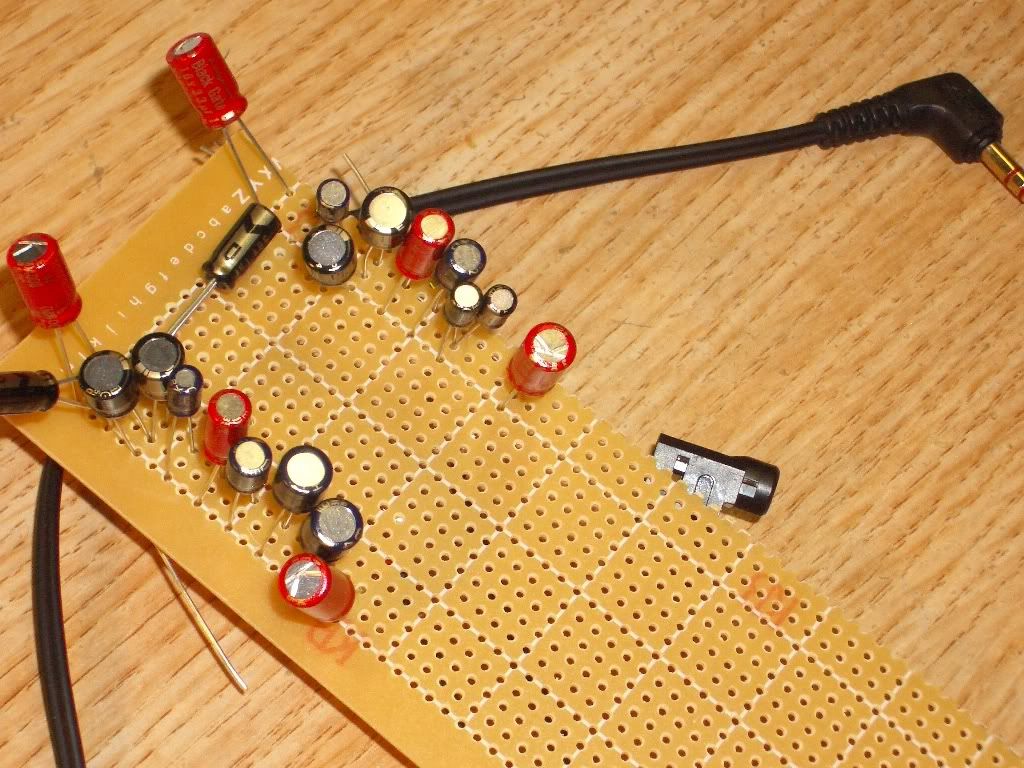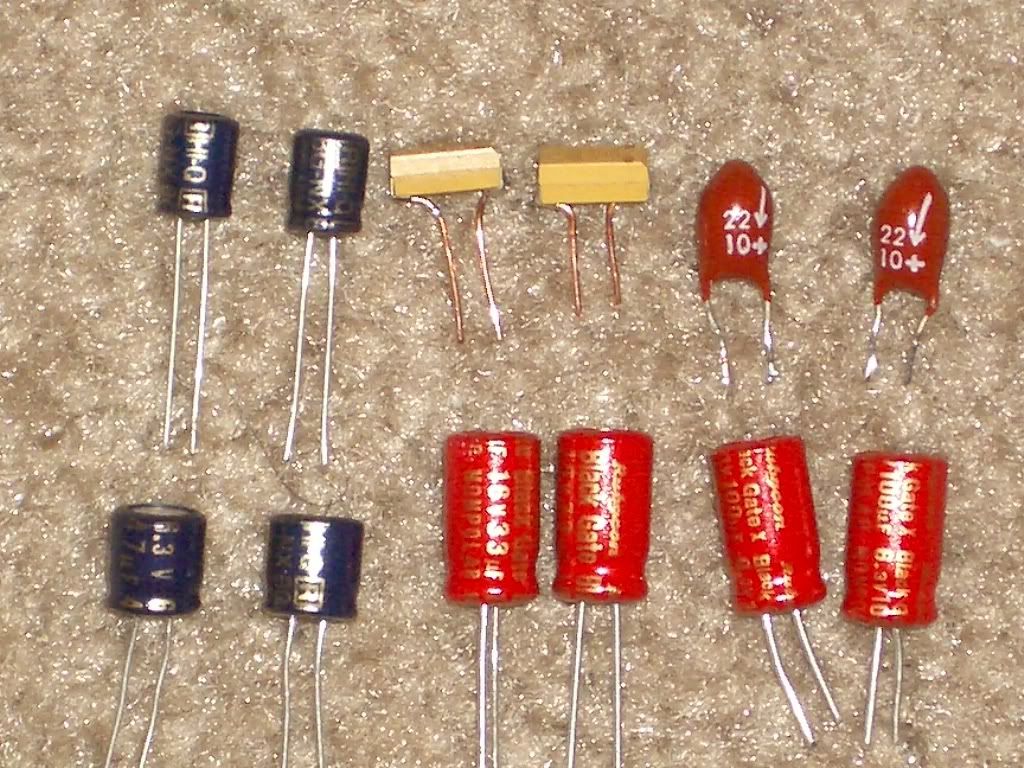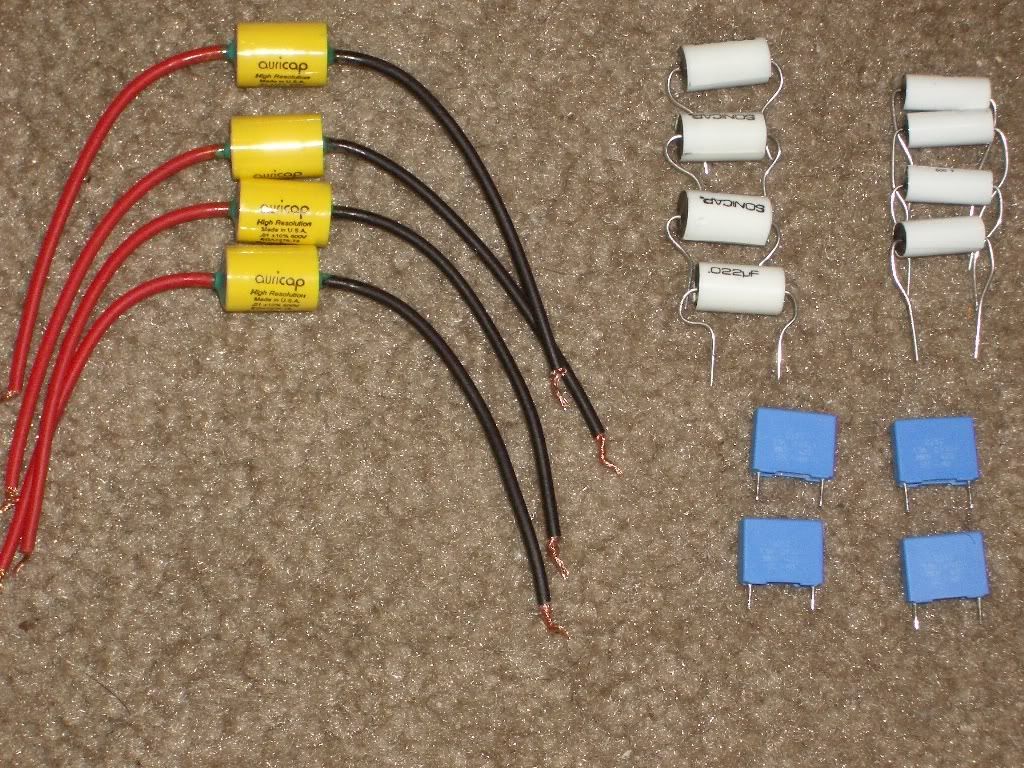Faust2D
Headphoneus Supremus
- Joined
- Apr 9, 2007
- Posts
- 3,036
- Likes
- 20
I used a Panasonic 4.5v/1500mA and it sounds much better than Sony discman wallwart.
| Originally Posted by sclee /img/forum/go_quote.gif Thank you for AudioCat tutorial,it a very useful. I just new entry to sr-001 for few week, the module still burning, as i like to listen the change of burning. Previously, i only want to use this on my travel on night at hotel, but after use i thing this can be compare as to or better to my using K701 system. The speed quick and not noticeable delay, when i come back to K701, the speed is so slow and sound push out some time. The bass is more better that entry level elec. phone such as 3030 and 2020 I do not want to mod the unit so much, i study the amp, good design. I want to improve the speed and detail of sr-001. I like to change the 10uf 50v cap to Blackgate and paellel as a PP, i buy two 10uf 50v Blackgate N cap, but can not find good PP fitted on the room, because two BG is too big, so that i just use two BG and no PP. That mean the cap uf had been increase 10uf vs (10+0.15)/2 =5.075uf. Normal the speed become slow and bass increase But after i install and run few hour after, the speed is so great and faster that before about 50%. The bass is not much deep and open before, i know that should be burn at least 300 hr, as our K701 head amp BG output cap already run one year but also can listen the improve. As i use a DC-AC selectable transformer with noise reduce function, i can not listen the noise even to the higher volume, i have 400ma and 800ma, a 800ma transformer have better bass detail and more deep. |
| Originally Posted by AudioCats /img/forum/go_quote.gif The first thing you should change is the opamp. If you don't want to mess with the high voltage section too much, change the C6 to a 0.1uf/630v X2 series polyprop, that will increase your high voltage reserve 10X and fits directly onto the board. It will open up the highs and extend the bass quite a bit. 10uf/50V N is too big, but the DC component there (assuming you are talking about the input caps) is only about 1.5V, so the 22uf/6.3v NX will fit nicely onto the board. with that you can still add a 0.15uf polyprop as by-pass cap. If you are not a bass head, you really only need about 4-6uf as input caps. I have tested with a pair of FKP 6.8uf/150v polyprop (huge, about the size of battery compartment) and the sound was nice and smooth, good bass but not as much as I want though (after all, my first pair of good headphones are the 600 ohm version Beyer 990) I personally don't think the stock 001 is as fine as a 701/good amp combo. I can use a pair of silver/teflon recabled iGrado (driving by a PPA type amp) to compete with the stock SRS-001 (on two NiMH batteries), the stock 001 will win some area while the silver-iGrado/ppa will win the others, kind of breaking even. Upon direct comparison though, the dynamic phones always sound hazy, as if looking though a layer of thin fiber.... I'd like to hear some comparison result of FC/SFC modded 001 vs. K701 driven by a $300 amp. Will be interesting. |
| How many hours is "a few hours"? |

| only 2 hours on a 14500 in a stock 001? It only draw about 220mA, I though the 14500 should last at least three hours. |

| Originally Posted by AudioCats /img/forum/go_quote.gif the reason for 0.12uf (sorry, I got it wrong, should be 0.12 instead of 0.15) is that will be the largest value polyprop that can fit onto the board as a direct replacement of the original 0.15uf poly(ester?). of course you can use smaller value, I have a habit of using as large and as nice a cap as possible, so the 0.12uf/63v was the default choice for me. On AC adaptor the stock 001 can beat the silver-iGrado/PPA, but I have no confidence with it competing with the 701 (on the other hand I have never compare the silver-iGrado with a 701 either). Yes the baby stax is unforgiving (a lot more so after the mods), you can hear all kinds of problems in your system, wrong cable, bad recording files, bad source...... sorry about your wallet only 2 hours on a 14500 in a stock 001? It only draw about 220mA, I though the 14500 should last at least three hours.... 
|















